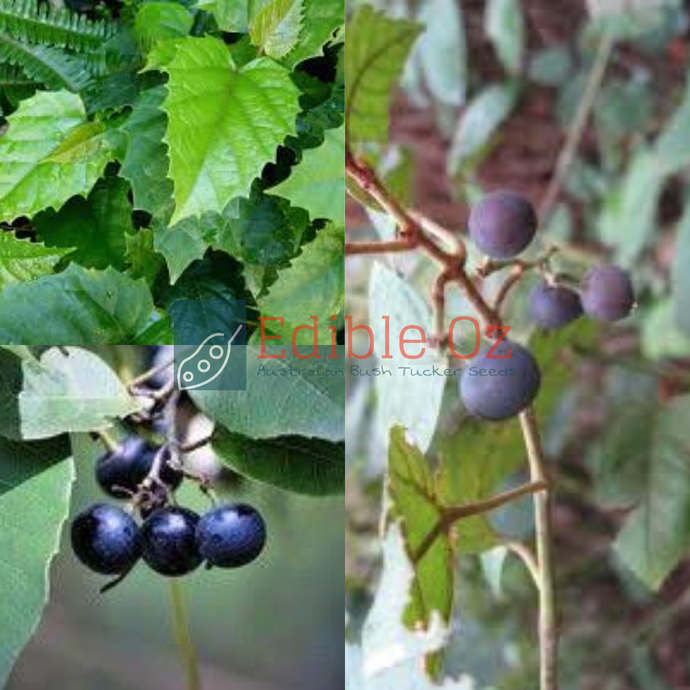
Native Grape / Kangaroo Vine - Cissus antarctica (Water vine) seeds
Regular price
$3.95
Sale
or make 4 interest-free payments of
$0.98 fortnightly with
 More info
More info
Cissus antarctica (Kangaroo Vine)
A vigorous and dense climber, also suitable as a ground cover, known for its glossy foliage and reliability in both ornamental and practical applications.
Quick Facts
- Height: 0.3–4 meters
- Width: 0.5–6 meters
- Flowering Time: Spring
- Flowers: Cream-colored
- Light Requirements: Diffused sunshine to partial shade
- Tolerances: Light frost, adaptable to indoor or outdoor cultivation
Why Grow Kangaroo Vine?
Cissus antarctica is a fast-growing, low-maintenance plant prized for its lush, glossy foliage. It is ideal for gardeners looking for an ornamental climber or ground cover that supports itself with tendrils. Its versatility extends to erosion control, habitat restoration, and creating wildlife-friendly spaces.
Bush Food Note
- Edible Berry: Can be eaten raw or stewed.
- Larger Vines: Yield fresh water when cut, useful in survival situations.
Bush Medicine Note
- Astringent Properties: The fruit was used as a gargle for sore throats.
- Raw Tuber: Consumed as food and used to combat internal complaints such as dysentery and diarrhea.
Disclaimer: Any medical or health claims about this plant are for informational purposes only. Consult a healthcare professional before use.
How to Grow
Planting Instructions:
- Prefers diffused sunshine to partial shade.
- Can be grown indoors or outdoors in well-drained soil.
- Trim back in spring if the plant becomes too large.
Maintenance:
- Long-lived and fast-growing, requiring minimal care.
- Does not require special attention once established.
Uses in Your Garden
- Ornamental: Adds lush greenery with its glossy, dark green leaves.
- Erosion Control: Stabilizes soil on slopes and embankments.
- Habitat Restoration: Supports ecosystem regeneration and biodiversity.
- Wildlife Habitat: Provides shelter for birds, insects, and small mammals.
Order Now
Enhance your garden or landscape with Cissus antarctica, a versatile and visually stunning plant that supports biodiversity and offers practical benefits. Perfect for climbers, ground covers, or erosion control projects!
